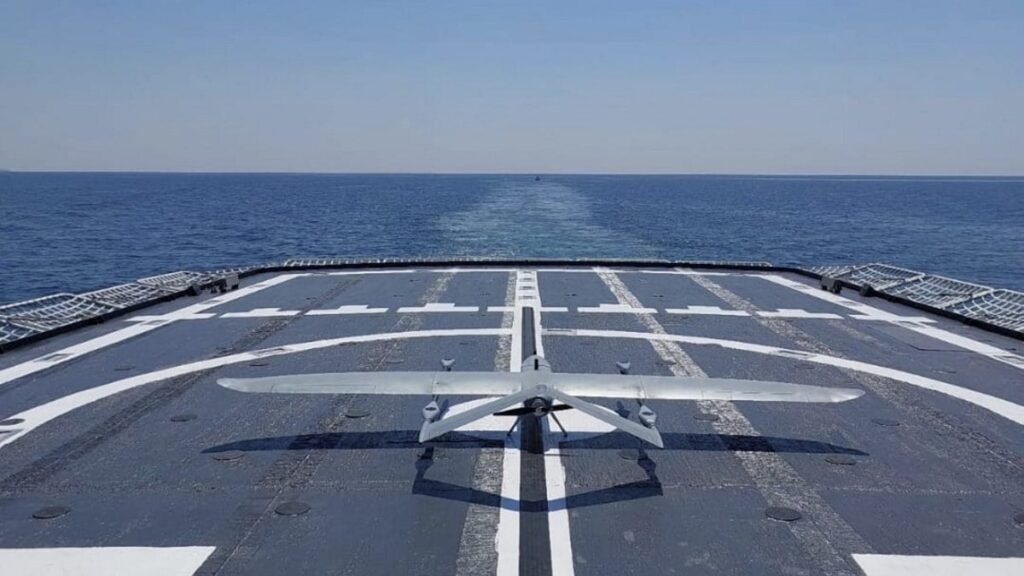Turkish defense company Havelsan is expanding the strategic capabilities of naval and unmanned maritime platforms through the integration of fixed-wing drones with vertical takeoff and landing (VTOL) capability.
Since 2019, Havelsan’s Robotic Autonomous Systems Center has been developing unmanned aerial, ground, and maritime vehicles. Its platform ecosystem allows the company to deploy solutions both domestically and internationally.
The VTOL fixed-wing drones — BAHA Autonomous Submarine UAV, BOZBEY Autonomous Submarine UAV, and BULUT Autonomous UAV — can operate independently or integrated with other aerial, ground, and maritime platforms. Recent tests have confirmed their ability to work alongside ships and unmanned surface vessels.
Designed for modern military needs, these drones stand out with runway-independent vertical takeoff and landing, full autonomous mission capabilities, and modular architecture. They can operate day and night, in cloudy conditions, performing reconnaissance, target marking, and intelligence gathering while accommodating various payloads.
Deployment on Malaysian ship
Havelsan signed a contract with DESAN Shipyard to deploy drones on maritime platforms. Under the agreement, BOZBEY will be installed on a 99-meter multipurpose mission ship supplied to Malaysia’s Maritime Enforcement Agency (MMEA), covering training, integration, logistics, and support.
The project aims to enhance the ship’s long-range reconnaissance and surveillance, boosting its intelligence deterrence. BOZBEY will be capable of precise takeoff and landing on the ship, transmitting live images and coordinates even beyond the vessel’s line of sight. This marks Havelsan’s first maritime contract for fixed-wing VTOL drones.
Expanding naval reach
The drones have varying payload capacities and endurance: BULUT carries 5 kilograms for six hours, BOZBEY 3 kilograms for six hours, and BAHA 2 kilograms for two hours. Their integration with ships and unmanned maritime vehicles extends operational reach, allowing reconnaissance, surveillance, and intelligence collection far from shore.
Fully autonomous capabilities reduce crew workload and accelerate decision-making during complex operations. Modular designs allow for mission-specific sensor and payload customization.
Strategic advantages at sea
Havelsan’s command-and-control system enables drones to operate in coordination with unmanned maritime vehicles and other platforms, increasing operational efficiency. Sub-cloud operational capability allows missions in light rain or snow, offering an advantage in variable maritime weather.
Drones can scan wide areas independently for coastal and border security, assist in disaster zones inaccessible by traditional transport, and support rapid response in search-and-rescue operations. Electronic warfare-resistant systems enhance operational reliability against maritime threats. The ability to transfer drones between control stations ensures sustained operations during extended missions, particularly for long-range maritime deployments.


